The concept of cloud computing is already much older than the current digitization debate. The starting point was taken by the cloud in the virtualization of servers. In this case, several instances of an operating system were made executable on one and the same hardware. Similar to how multiple documents can be processed simultaneously on one workstation, several operating systems now run on a powerful computer. Exactly with this characteristic it was then possible to centralize server hardware and to bring the operating system decentralized operationally. This has opened up a very wide field for the users. Suddenly, it was possible to run compute-intensive applications without having previously bought expensive hardware. The rent of server services was born. In turn, the term IaaS implies something like Infrastructure-as-a-Service. So it did not matter where the server was located locally, you just need access. This ignorance of the physical locality has ultimately led to the concept of the cloud, “somewhere in the haze”. In a short time, then the most diverse cloud services have established. SaaS (Software-as-a-Service) is probably the most widely used service today. Renowned companies are ready with their products such as Office 365, Amazon Prime, Netflix, Booking.com and so on.
Most applications (APPS) that we download to our smartphones are in the category of cloud services. Only a small program is processed locally. All the rest will happen in the cloud. This means that operating systems are executed many times, programs and objects are processed at the same time, all user data is stored in a database and the access is made via various networks. That together is cloud computing from a technical point of view – works perfectly. How the cloud is changing our daily lives and social structures becomes clear when comparing brain and cloud.
Locality: We humans are by nature a three-dimensional being. Even without special aids, we can move around the room well. Here, the WO is the central question. It does not matter where our home is, we go to work or spend our free time. This requires location information that we get out of a map, provided with names and order by postal code. Newer instruments such as GPS tracking and navigation systems actually make life easier for us. Nevertheless, reference is always made to physically real coordinates. If we travel then we would like to know in advance, in which hotel we will spend the evening. For most of us it is just too little to know: “Somewhere a bed will be standing”. Traveling in the cloud would be a drastic change. It’s the same with many who no longer know where their data is stored. Although these too arrive at a physical location in a data center with a postal address. Exactly – this data center can be anywhere in the world and we do not know where. Nevertheless, we always have access to our data and this ensures the IP address.
Topology: The brains of mammals, and especially those of humans, are characterized by a large number of neurons that are highly interconnected. The individual neurons represent the actuators, which receive, process and release information. The situation is similar in a cloud. Quite rightly, there are not many billions of servers in the world today, but their degree of networking is already very high. In this network you could compare the servers with the neurons in a brain. It will probably not be very long before the cloud has as many actors as our brain. From this side alone, it is very important that we explore the brain more intensively. This then provides the basis for understanding an intelligent cloud.
IaaS: This abbreviation (Infrastructure-as-a-Service) is very closely linked to cloud technology. An owner procures more processing power and more storage than he needs, virtualizes it and makes it available to the customer as a service. In the private sector today hardly anyone has servers at home. Companies are sometimes even more hesitant. Above all, the security and privacy is not finally resolved. In the meantime you can already buy Network-as-a-Service. Ultimately, all IoT devices will find their background in the cloud.
SaaS: Photos and movies are in appropriate cloud services such as iCloud, Dropbox, OneDrive, and more. saved. You no longer need to worry about data backup, can access from any point on the earth with any device to their own data. The apps in conjunction with the terminals are the artificial extension of human capabilities and lead to completely new behaviors. For example, you can travel with Booking.com with confidence: “Somewhere will already be a bed,” with a mountain bike just drive into the terrain and safely come back with the navigation device or quickly cut a movie on the SmartPhone. It’s typical for SaaS to do its work with Office 365 or Google Docs (which I’m doing right now). Which also changes the working habits: “Working where others go on holiday”. The digital nomads are here! But above all, service saves money and you always have the latest Version.
Access: means access to resources, knowledge and knowledge. It takes energy, learning and wisdom. For millennia, these fields were only accessible to a select group of people. Most of the time the “access” was a right of inheritance that one has received from his parents at birth. Children of chiefs, kings and shamans became exactly what their fathers were. With diligence and willingness to learn, you could not do much to advance in these circles. Completely different is now the access to the computer cloud. One speaks here also of the “Access”. However, this is no longer dependent on birthright or social status. Nevertheless, access is not free. First of all, you have to know that there are cloud services. Secondly, of course, the technical requirements such as devices and networks must be present. That costs a bit something. The providers usually allow us a very cheap entry – but with only limited service. If you want to have all the power, then you need money. A single service does not cost a lot. With EUR 10 you are there fast. However, if you add up all the services in a household, you will quickly get EUR 100 together per person. Then access is not so freely accessible again, but of course dependent on the social stratification. We’ll have to get used to the fact that these services all cost a bit or are served with advertising, which in the end also costs something again.
Illustration: The human brain is not able to recognize the real world as such due to the limitations of the sensors. In the sense of constructivism, the brain creates its own reality, both a collective and a subjective. Even the computer cloud is just an illustration. It also uses sensors such as smartphones, temperature sensors, speedometers, people, etc. In the future, these will be enriched by the full range of Internet-of-Things and these will occur in billions of copies. As a result, there is no image of reality in the cloud, but we are talking about a virtual reality similar to the reality in the brain – that is, a phantom world.
Thinking: That’s the human quality par excellence. Until a few years ago, every machine was denied this ability. However, developments in artificial intelligence have shown something completely different in the meantime. Machines can at least have synthetic intelligence. Logical and mathematical problems can already be better solved by computers for a long time anyway. AI, unlike humans, is better at recognizing patterns and can learn that much faster. A very human quality is its better feedback to one’s own actions. Trial and error is the law of evolution. In addition, the human brain has capabilities such as problem solving, creativity, imagination, planning, orientation, and much more. learned – which, after all, is human cognition. We do not yet know what cognition cloud computing is and will be in the future.
Methodology: The Constructivist psychological schools are different, but in principle quite clear. Man is unable to recognize reality as it is. Due to the sensory input, the brain constructs an image that allows humans to interact without difficulty. The illustration is improved by an ongoing feedback. The necessary calculations are carried out in the neural network of the brain. The development of artificial intelligence in conjunction with traditional computing creates a simulated reality in the cloud. Again, the simulation is constantly improved by Feedback.
Consciousness: Experts agree that the question of consciousness is only a gradual one. The American physicist Michio Kaku has set up a three-stage model. At the lower level, living beings can orientate themselves in space, then at the next stage form social systems, and man is only able to plan and in a certain way predict the future. None of these levels will do justice to the current computer cloud system, although the number of actors and their networking could point to a certain low level of consciousness. Responding to an event, the cloud can do very well in the meantime. When we search for a book on Google, we’ll get an offer from Amazon soon. However, if we are not active for a long time, we still get an offer and that is timed. We can therefore call the state of consciousness of the current cloud EventiveTime. After Kaku you would have to classify them at level <1. So we would not worry about the computer cloud becoming smarter than people. Unfortunately, the human brain has been constant for millennia and the cloud is growing exponentially (in knots and edges). We could paraphrase human consciousness at level three with the term Predictive Self, and that grows, if at all, very slowly.
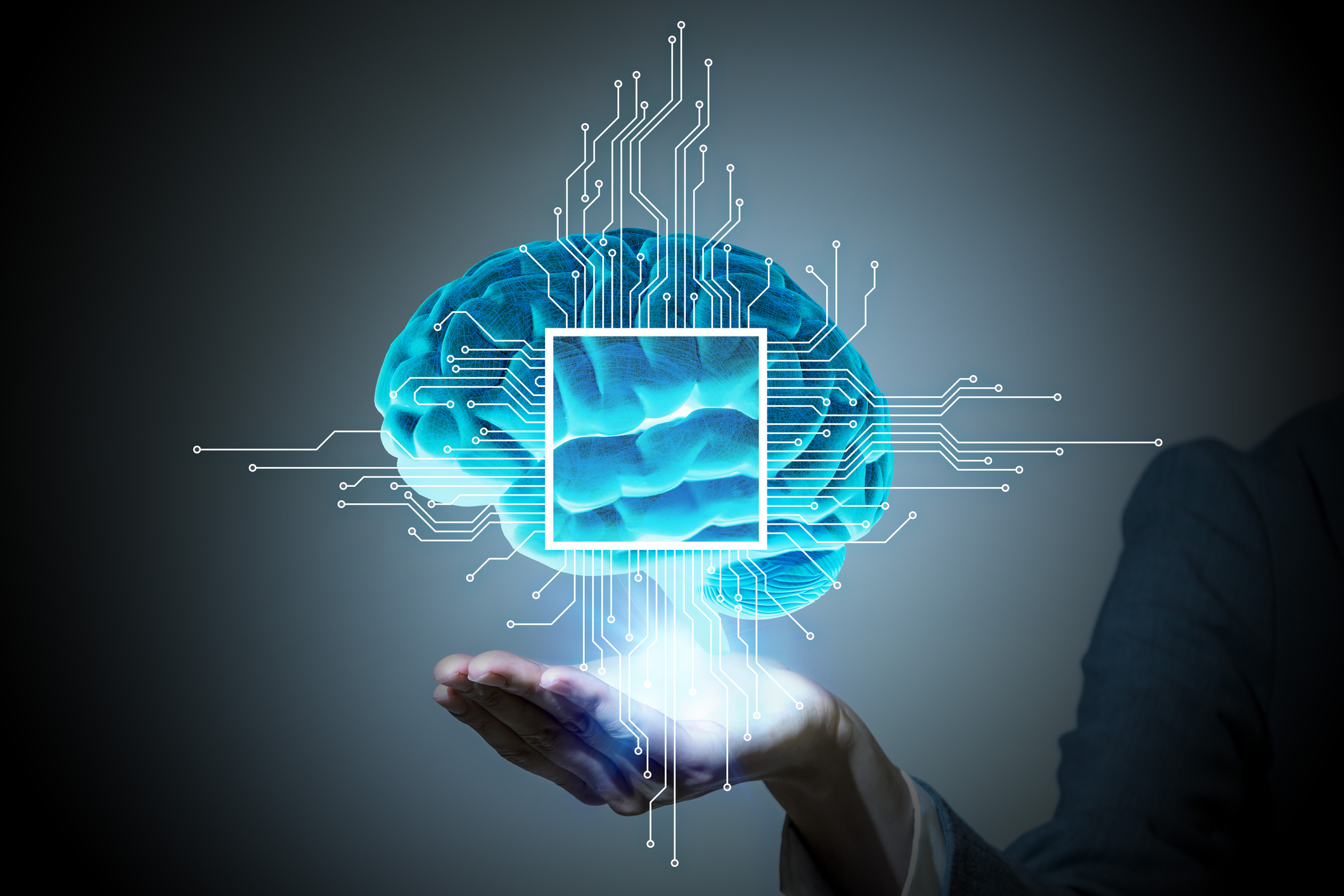
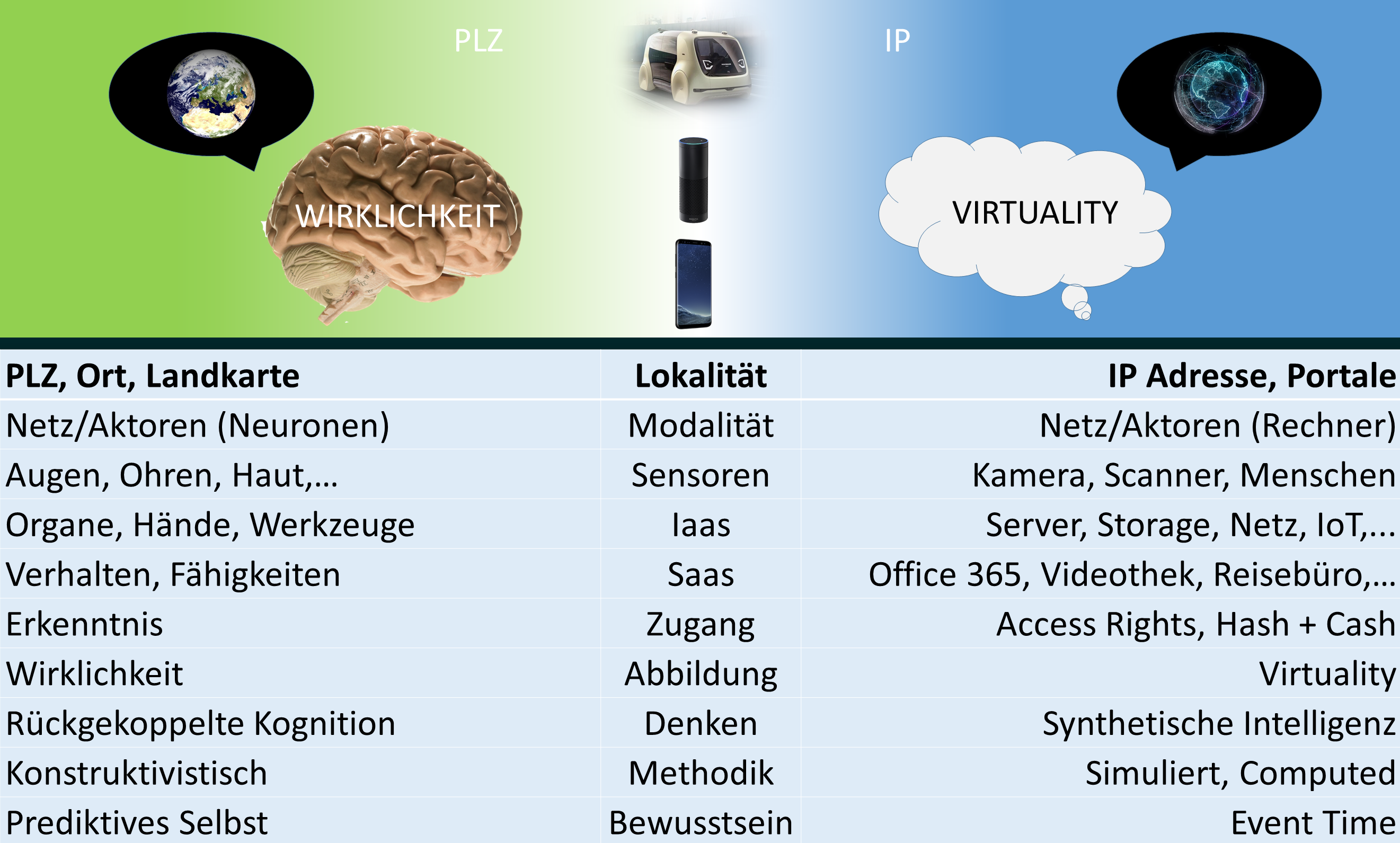

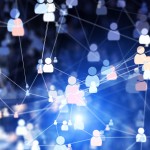
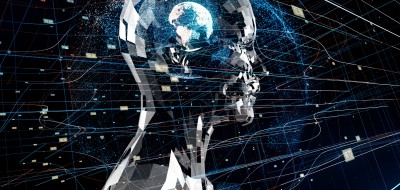
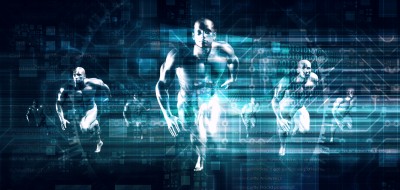

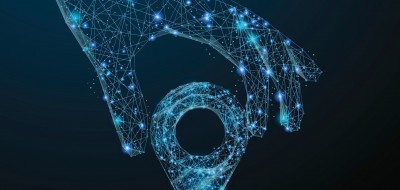
 Deutsch
Deutsch English
English